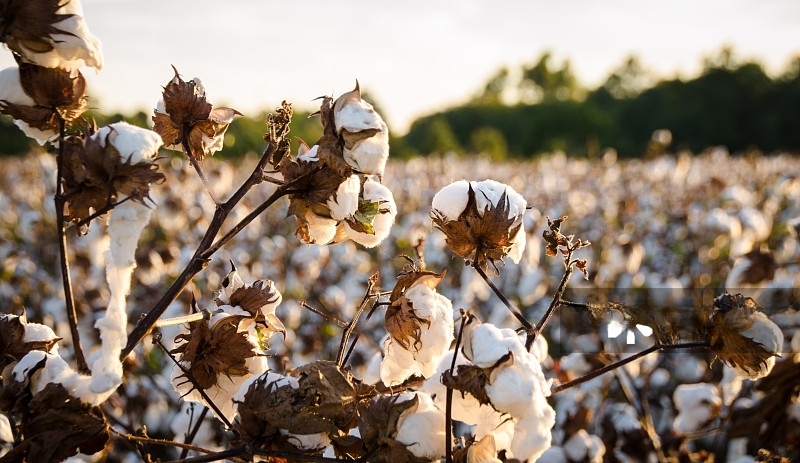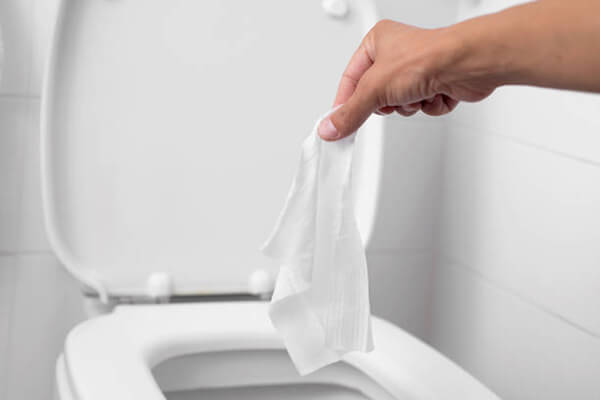
5 avantages d'utiliser des lingettes de maquillage naturelles
3 avril 2023
Dévoilé : Comment les principaux fabricants de lingettes humides maintiennent la qualité
26 février 2024Introduction : La popularité des lingettes humides et leur commodité perçue
Les lingettes humides sont devenues un produit de plus en plus populaire ces dernières années, vantées pour leur commodité et leur polyvalence. Du nettoyage des déversements et des dégâts au rafraîchissement après une séance d'entraînement ou une longue journée, les lingettes humides sont considérées comme une solution simple pour toutes sortes de situations. Grâce à leur portabilité et leur caractère jetable, ils sont devenus un incontournable dans de nombreux foyers, sacs à main et sacs de sport. Cependant, la commodité des lingettes humides a un prix : leur impact environnemental a suscité des inquiétudes et des questions ont été soulevées quant à leur sécurité et à leurs ingrédients. L’une des affirmations concernant les lingettes humides est qu’elles ne contiennent aucun conservateur, ce qui en fait une option naturelle et sûre pour les peaux sensibles. Mais cette affirmation est-elle vraiment vraie ? Dans cet article, nous explorerons la réalité des lingettes humides et de leurs ingrédients, et répondrons à la question de savoir si elles sont réellement sans conservateurs.
L'affirmation selon laquelle les lingettes humides sont sans conservateur
L’une des affirmations les plus courantes concernant les lingettes humides est qu’elles ne contiennent aucun conservateur, ce qui en fait une option naturelle et sûre pour les peaux sensibles. Cette allégation est souvent utilisée comme outil de marketing, attirant les consommateurs qui recherchent des produits contenant moins de produits chimiques et d’additifs. Cependant, la vérité est que toutes les lingettes humides ne sont pas égales et, même si certaines sont exemptes de certains conservateurs, beaucoup contiennent encore d’autres produits chimiques et additifs qui peuvent être nocifs pour la peau et l’environnement. En fait, il est rare de trouver une lingette humide totalement exempte de conservateurs, car des conservateurs sont souvent ajoutés pour empêcher la croissance de bactéries et d'autres micro-organismes susceptibles de provoquer une détérioration et une contamination. Ainsi, même si l’affirmation selon laquelle les lingettes humides sont sans conservateurs peut sembler séduisante, il est important d’examiner de plus près les ingrédients et de comprendre les risques potentiels encourus.
La réalité des ingrédients des lingettes humides, dont les conservateurs
Les lingettes humides sont composées de divers ingrédients, notamment de l'eau, des tensioactifs, des émollients et des conservateurs. Bien que ces ingrédients puissent contribuer à rendre les lingettes humides efficaces pour nettoyer et rafraîchir, ils peuvent également présenter des risques potentiels à la fois pour l'utilisateur et pour l'environnement. Des conservateurs, en particulier, sont ajoutés aux lingettes humides pour empêcher la croissance de bactéries nocives et d’autres micro-organismes susceptibles de provoquer une détérioration et une contamination. Cependant, de nombreux conservateurs couramment utilisés ont été associés à des irritations cutanées, des allergies et d’autres problèmes de santé. Quelques exemples de conservateurs pouvant être trouvés dans les lingettes humides comprennent la méthylisothiazolinone (MI), le phénoxyéthanol et le chlorure de benzalkonium. L'IM, en particulier, a été associé à un nombre croissant de réactions allergiques, ce qui a conduit à son interdiction dans certains produits en Europe. Bien que certaines lingettes humides puissent prétendre être exemptes de certains conservateurs, il est important de lire attentivement la liste des ingrédients et d'être conscient des risques potentiels encourus.
Les dangers potentiels des conservateurs dans les lingettes humides
Bien que des conservateurs soient ajoutés aux lingettes humides pour empêcher la croissance de bactéries nocives et d’autres micro-organismes, ils peuvent également présenter des dangers potentiels pour l’utilisateur et l’environnement. Certains conservateurs couramment utilisés dans les lingettes humides ont été associés à des irritations cutanées, des allergies et d’autres problèmes de santé. Par exemple, la méthylisothiazolinone (MI) est un conservateur couramment utilisé qui a été associé à un nombre croissant de réactions allergiques, notamment la dermatite de contact, l'urticaire et même l'anaphylaxie dans les cas graves. Le phénoxyéthanol, un autre conservateur couramment utilisé, a été associé à des irritations cutanées et à des dermatites de contact, ainsi qu'à une toxicité potentielle pour la reproduction et le développement. Le chlorure de benzalkonium, un autre conservateur présent dans certaines lingettes humides, a été associé à une irritation et une sensibilité cutanées et peut également contribuer au développement de bactéries résistantes aux antibiotiques. Outre ces risques potentiels pour la santé, l’utilisation de conservateurs dans les lingettes humides peut également avoir des impacts environnementaux négatifs, car ils peuvent contribuer à la pollution de l’eau et nuire à la vie aquatique. Il est donc important que les consommateurs soient conscients des dangers potentiels des conservateurs contenus dans les lingettes humides et envisagent des options alternatives lorsque cela est possible.
Le cadre réglementaire autour des lingettes humides et des conservateurs
L'utilisation de conservateurs dans les lingettes humides est réglementée par diverses agences gouvernementales à travers le monde, notamment la Food and Drug Administration (FDA) des États-Unis, l'Agence européenne des produits chimiques (ECHA) et la Therapeutic Goods Administration (TGA) australienne. Ces agences fixent des limites sur la quantité de conservateurs pouvant être utilisées dans les lingettes humides, ainsi que des exigences en matière d'étiquetage et de tests de sécurité. Par exemple, aux États-Unis, la FDA exige que tous les produits cosmétiques, y compris les lingettes humides, soient sûrs à utiliser et correctement étiquetés avec les ingrédients et les avertissements. En Europe, l'ECHA a fixé des limites à la quantité de certains conservateurs, tels que le MI, pouvant être utilisés dans les produits cosmétiques, y compris les lingettes humides, et a complètement interdit l'utilisation de certains conservateurs dans les produits sans rinçage. En Australie, la TGA exige que tous les produits thérapeutiques, y compris les lingettes humides, soient enregistrés auprès de l'agence et répondent aux normes de sécurité et d'efficacité. Cependant, des inquiétudes subsistent quant à la sécurité de certains conservateurs utilisés dans les lingettes humides, et certains groupes de consommateurs et environnementaux réclament des réglementations plus strictes et plus de transparence concernant l'utilisation de ces produits chimiques dans les produits de consommation. En tant que consommateur, il est important d'être conscient du cadre réglementaire concernant les lingettes humides et les conservateurs, et de choisir des produits qui répondent aux exigences de sécurité et d'étiquetage.
Alternatives aux lingettes humides contenant des conservateurs
Pour les consommateurs préoccupés par les dangers potentiels des conservateurs contenus dans les lingettes humides, plusieurs alternatives s’offrent à eux. Une option consiste à utiliser des lingettes humides sans conservateur, qui deviennent de plus en plus populaires et largement disponibles. Ces lingettes peuvent utiliser des ingrédients naturels, tels que des tensioactifs d'origine végétale et des huiles essentielles, pour obtenir des effets nettoyants et rafraîchissants sans utiliser de conservateurs. Une autre option consiste à utiliser des lingettes en tissu réutilisables, qui peuvent être lavées et réutilisées plusieurs fois, réduisant ainsi les déchets et les dommages potentiels à l'environnement. Ceux-ci peuvent être fabriqués à partir de divers matériaux, tels que le bambou, le coton ou la microfibre, et peuvent être utilisés avec de l'eau ou une solution nettoyante douce. Certaines entreprises proposent également des lingettes jetables écologiques fabriquées à partir de matériaux biodégradables et exemptes de conservateurs et autres produits chimiques nocifs. Enfin, il est important de se rappeler que dans certaines situations, comme lorsqu'on s'occupe de nourrissons ou de personnes dont le système immunitaire est affaibli, des lingettes humides peuvent être nécessaires à des fins d'hygiène. Dans ces cas-là, il est important de choisir des produits dont la sécurité a été testée et qui répondent aux exigences réglementaires, et de jeter correctement les lingettes usagées afin de minimiser les dommages à l'environnement.
En tant que consommateurs, nous avons le pouvoir de faire des choix éclairés concernant les produits que nous utilisons sur notre peau, y compris les lingettes humides. Si la commodité des lingettes humides est indéniable, il est important d'être conscient des dangers potentiels des conservateurs contenus dans ces produits, ainsi que de l'impact environnemental des lingettes jetables. En choisissant des options sans conservateurs ou respectueuses de l'environnement, ou en optant pour des lingettes en tissu réutilisables, nous pouvons réduire notre exposition à des produits chimiques potentiellement nocifs et minimiser notre impact sur l'environnement. Il est également important de rester informé des cadres réglementaires et de plaider en faveur de réglementations plus strictes et d'une plus grande transparence concernant l'utilisation de conservateurs et autres produits chimiques dans les produits de consommation. En fin de compte, en faisant des choix conscients concernant les produits que nous utilisons, nous pouvons donner la priorité à notre santé et à notre bien-être, ainsi qu’à ceux de la planète.


